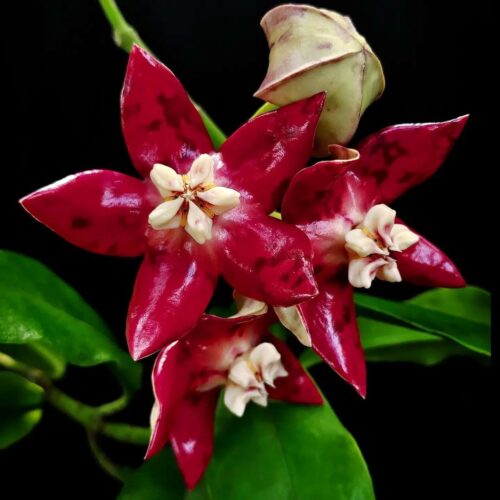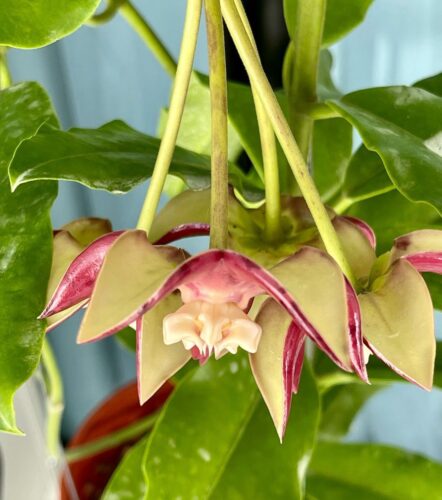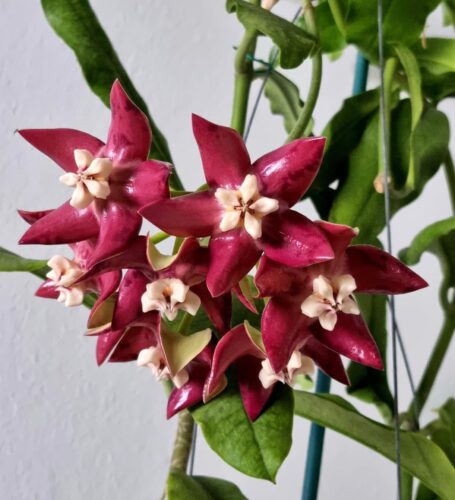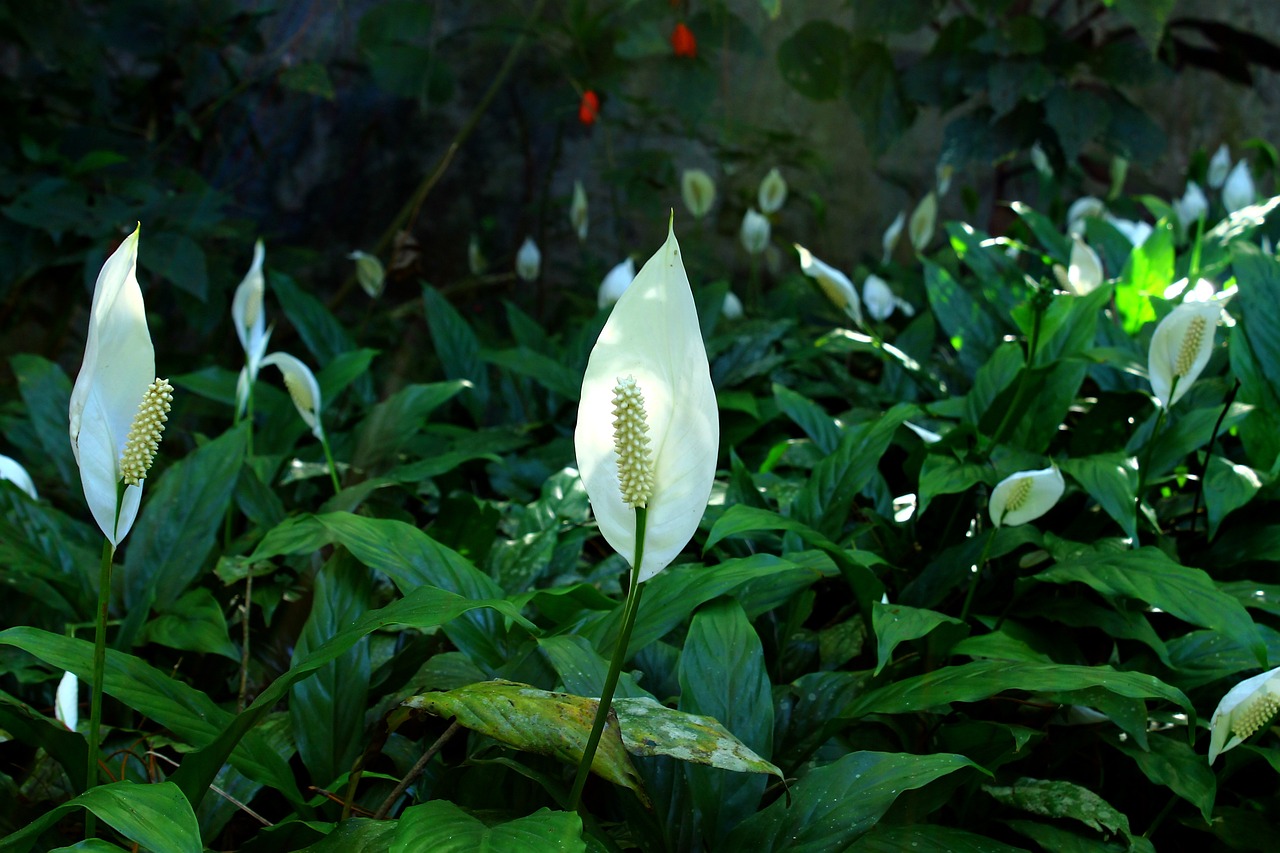Read this Hoya Imperialis Care and Growing Information guide for easy tips to nurture this beautiful plant with colorful blooms.
Explore this Hoya Imperialis Care and Growing Information guide for expert tips to help you parent this plant with maroon-red blooms.
CHECK OUT Hoya Rangsan Growing and Care Guide
What is Hoya Imperialis?

Origins and Growth: Among all the Hoyas you might have seen in your time as a gardener, Hoya Imperialis really stands out. This plant comes from Malaysia and grows very quickly, which can be a bit hard to control. It boldly spreads and climbs over whatever it can grasp, consistently producing clusters (umbels) of the most stunning maroon waxy flowers throughout the entire year.
Flowers: The defining feature of Hoya Imperialis unquestionably lies in its extraordinary blooms. These flowers appear in hues from maroon-red to mauve. Their star-like shape closely resembles delicate ornaments often found adorning wedding cakes. Moreover, these flowers release a delightful sweet, spicy fragrance.
Foliage and Appearance: The lush, glossy green leaves of Hoya Imperialis contribute to its overall visual appeal. These leaves, complementing the captivating flowers, create a striking contrast. The vibrant foliage and captivating blooms add to the plant’s aesthetic value.
Benefits and Air Purification: It has been highlighted that Hoyas, including Hoya Imperialis, deliver more than just visual beauty. They are famous for their effectiveness in purifying the air and actively absorbing harmful volatile organic compounds that linger in the environment.
EXPLORE Passiflora Caerulea Growing Guide
How to Propagate Hoya Imperialis

Propagation methods for Hoya imperialis:
- Stem Cuttings
- Leaf Cuttings
- Air Layering
- Division
The easiest method: Stem Cuttings
- Choose a healthy stem from the Hoya imperialis plant that is not flowering and has at least 3 nodes. The stem should be around 4-6 inches long.
- Using clean pruning shears, make a clean diagonal cut just below a node. Remove any leaves near the lower end of the cutting, leaving a few leaves at the top.
- Optional: Apply Rooting Hormone: If you have rooting hormone, you can dip the cut end of the stem into it.
- Fill a small pot with the well-draining potting mix. Make a small hole in the soil using a pencil or your finger.
- Insert the cut end of the stem into the hole, ensuring that at least one node is buried in the soil. Gently press the soil around the cutting to secure it.
- Water the soil thoroughly but avoid making it overly soggy. The goal is to provide enough moisture for the cutting without causing rot.
- If you’re using individual pots, you can cover each pot with a plastic bag or use a humidity dome to create a mini greenhouse effect. This helps maintain high humidity around the cutting, which aids in rooting.
- Place the pots in a warm and bright location, but avoid direct sunlight, which can scorch the cutting. Indirect light is ideal.
- Over the next several weeks, the cutting will develop roots. You can gently tug on the cutting after a few weeks to check for resistance, which indicates root growth.
Transplanting: Once the cutting has developed a healthy root system, you can transplant it into a slightly larger pot with regular potting soil.
CHECK Hoya Caudata Sumatra Care and Growing Guide
How to Propagate Hoya Imperialis in Water
- Choose healthy stems with at least 3 leaf nodes. Cut just below a leaf node using clean, sharp scissors or pruning shears.
- Use a clean glass or jar with enough room to submerge the cuttings in water while keeping the leaves above the water line.
- Put the cuttings in the container with water, ensuring the leaf node is submerged. You can use tap water, but dechlorinating it for a day is helpful.
- Place the container in a spot with bright, indirect light. Avoid direct sunlight, as it can overheat the water.
- Change the water every few days to prevent stagnation and keep it fresh.
- After a few weeks to a few months, you’ll start to see roots forming at the leaf nodes. This is a sign that the cutting is ready to be potted.
- Once the roots are a few inches long, carefully transplant the cutting into a well-draining potting mix suitable for Hoyas. Plant the rooted cutting and water lightly.
- Place the potted cutting in a location with bright, indirect light. Gradually introduce Hoya Imperialis to more direct light to prevent shock.
FIND How to Grow Hoya Polyneura
Pot Size for Growing Hoya Imperialis
For Hoya imperialis, use a netted pot within a liner pot for effective drainage and moisture control. When its roots expand, simply move the netted pot to a larger one for easier repotting. Unlike smaller Hoyas, this variety benefits from more root space. Start with a 10-inch pot, adding 2 inches every two years. It’s about giving it room to thrive without overwhelming it.
FIND How to Grow and Care for New Hampshire State Flower
Ideal Growing Conditions for Hoya Imperialis

Light
Hoya Imperialis, or Wax Plant, prefers bright, indirect light. Place it near an east or west-facing window to provide the right amount of sunlight. Avoid direct afternoon sun as it can scorch the leaves. Rotate the plant occasionally for even growth.
Soil
For Hoya Imperialis, use a well-draining mix like 1 part potting soil, 1 part orchid bark, and 1 part perlite. This enhances aeration and drainage. Maintain a slightly acidic to neutral pH level of 6.0 to 7.0. Adding coconut coir can help retain moisture. Good drainage prevents root rot, promoting healthier growth.
Water
Water Hoya Imperialis moderately. Allow the top inch of soil to dry between waterings. In the growing season, water when the soil feels slightly dry. Reduce watering in winter. Avoid overwatering to prevent root rot. Use room temperature water. Adjust the frequency based on the environment; humidity affects water needs.
Temperature and Humidity
Maintain Hoya Imperialis at 65-80°F (18-27°C) during the day and above 50°F (10°C) at night. Keep humidity around 40-60% for optimal growth. Higher humidity mimics its natural habitat. Regular misting and a humidity tray aid moisture. Protect from drafts and sudden temperature changes. Consistency supports healthy foliage and flowering.
LEARN How to Grow and Care for Hoya Mathilde Indoors
Hoya Imperialis Care

Fertilizer
For optimal Hoya Imperialis care, start with a nutrient-rich organic mix during potting, and then apply balanced liquid fertilizer. Choose organic feeds for their slow-release advantages over chemicals, making them a great fit for Hoyas like this. Maintain feeding during winter, although at a reduced frequency (half or less). Enhance blooming by using orchid fertilizer during active growth months. Opt for liquid organic options to ensure easy dilution and prevent salt buildup in the soil. Remember, consistent watering alongside feeding is vital for achieving success.
Pruning
Pruning Hoya Imperialis can be a bit tricky, especially when it comes to its dried flower peduncles. While the urge to snip away dead flower heads is common, remember that this plant’s main allure lies in its blossoms. It’s best to resist the pruning instinct here.
Unlike some plants where deadheading stimulates new blooms, Hoya Imperialis often blooms from the same peduncles it had before. Removing these old peduncles means the plant needs to exert extra energy to generate fresh flowers. Given that this plant’s prime purpose is flowering, it’s wise to let the old peduncles be.
Pests and Diseases
Pests:
- Mealybugs: These tiny, cotton-like insects often cluster in leaf nodes and on the undersides of leaves. Use a cotton swab dipped in rubbing alcohol to remove them.
- Aphids: These sap-sucking pests weaken the plant and distort growth. Wash them off gently with a strong stream of water or use insecticidal soap.
- Scale Insects: They appear as small, round bumps on stems and leaves. Remove them manually or use insecticidal oil to suffocate them.
- Spider Mites: These minuscule creatures create fine webbing on leaves and cause yellowing. Increase humidity and rinse leaves to deter them.
Diseases:
- Root Rot: Overwatering and poorly draining soil can lead to root rot in the Hoya Imperialis plant. Ensure proper drainage and adjust watering accordingly.
- Leaf Spot: Fungal infections can cause brown or black spots on leaves. Improve air circulation and avoid overhead watering.
- Powdery Mildew: A white, powdery substance on leaves is a sign of this fungal disease. Increase air circulation and use fungicidal treatments.
- Bacterial Leaf Blight: Dark, watery spots on leaves indicate bacterial infection. Remove affected leaves and avoid overhead watering.
Prevention and Care:
- Regularly inspect your Hoya Imperialis for pests and signs of diseases.
Isolate new plants for a few weeks to prevent introducing pests to your collection. - Keep a good balance between watering and letting the soil dry out slightly.
- Maintain proper air circulation by not crowding plants.
- Avoid overhead watering, as damp foliage can encourage diseases.
- Isolate new Hoya Imperialis plants from your collection for a period to prevent potential pest or disease spread
Read about Ceanothus Joyce Coulter Growing and Care Guide
FAQs

Q1: How can I encourage my Hoya Imperialis to bloom?
A1: Using orchid fertilizer during active growth can promote blooming. Ensure your Hoya Imperialis receives proper light, correct watering, and a balanced care routine.
Q2: Why are my Hoya Imperialis leaves turning yellow?
A: Yellowing leaves in can be due to overwatering, inadequate light, or old age. Check your watering habits and ensure it gets enough light.
Q3: Is misting necessary for Hoya Imperialis?
A: Misting can be beneficial, especially in dry indoor environments. It helps increase humidity around the Hoya Imperialis plant, which it appreciates.
Q4: Can I grow Hoya Imperialis in a hanging basket?
A: Yes, you can grow Hoya Imperialis in hanging baskets, but ensure it has proper support and drainage. Hoyas look stunning cascading from baskets.
Q5: What should I do if my Hoya Imperialis becomes leggy?
A: To combat legginess in Hoya Imperialis, trim back the long, bare stems and provide more light to encourage compact, healthy growth.
Q6: How do I revive a neglected or struggling Hoya Imperialis?
A: Gradually reintroduce Hoya Imperialis to proper care conditions, including suitable light, watering, and feeding. Trim dead or damaged growth to encourage new growth. Be patient; recovery takes time.



